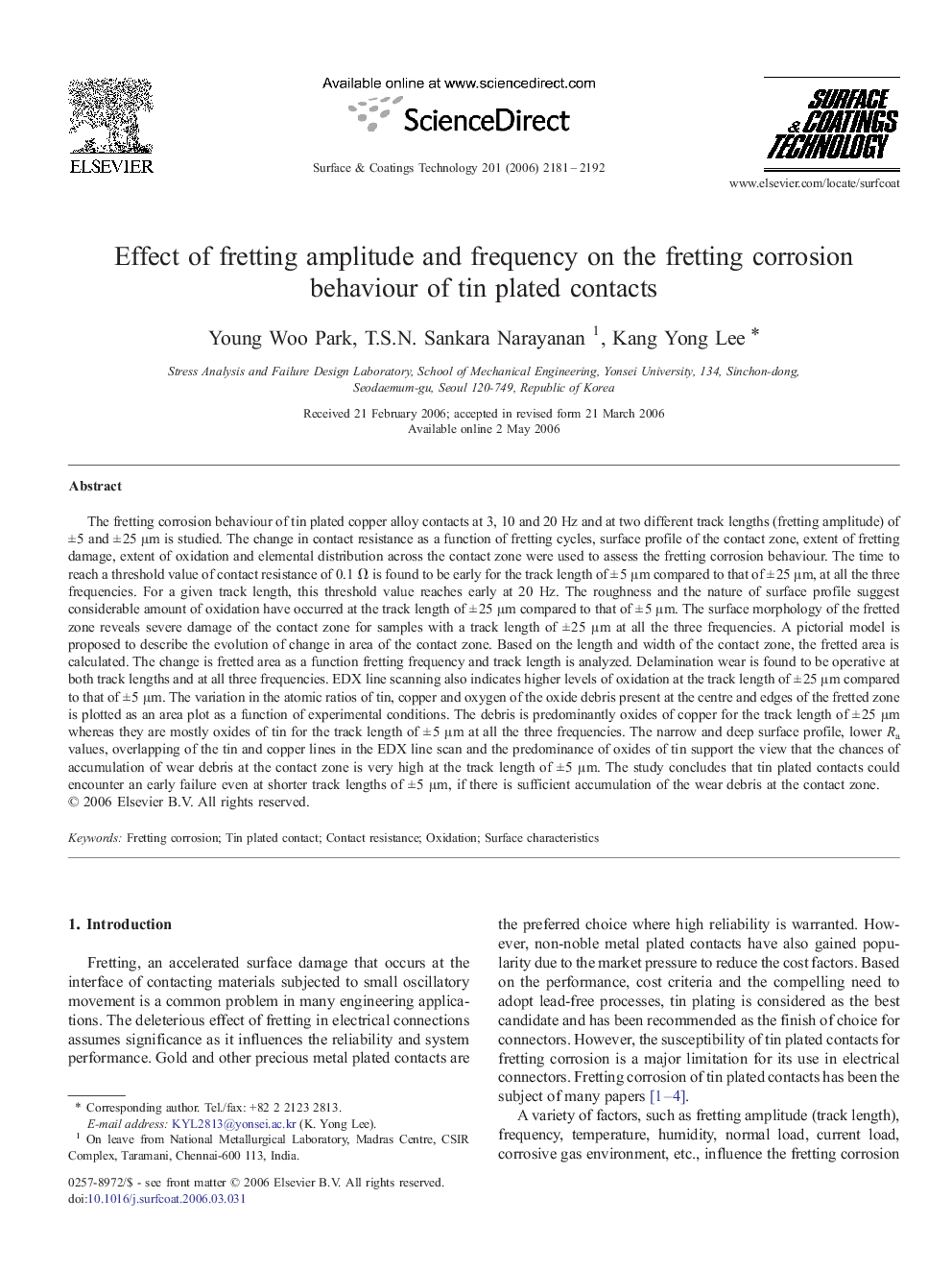| کد مقاله | کد نشریه | سال انتشار | مقاله انگلیسی | نسخه تمام متن |
|---|---|---|---|---|
| 1663312 | 1008465 | 2006 | 12 صفحه PDF | دانلود رایگان |
عنوان انگلیسی مقاله ISI
Effect of fretting amplitude and frequency on the fretting corrosion behaviour of tin plated contacts
دانلود مقاله + سفارش ترجمه
دانلود مقاله ISI انگلیسی
رایگان برای ایرانیان
کلمات کلیدی
موضوعات مرتبط
مهندسی و علوم پایه
مهندسی مواد
فناوری نانو (نانو تکنولوژی)
پیش نمایش صفحه اول مقاله

چکیده انگلیسی
The fretting corrosion behaviour of tin plated copper alloy contacts at 3, 10 and 20 Hz and at two different track lengths (fretting amplitude) of ± 5 and ± 25 μm is studied. The change in contact resistance as a function of fretting cycles, surface profile of the contact zone, extent of fretting damage, extent of oxidation and elemental distribution across the contact zone were used to assess the fretting corrosion behaviour. The time to reach a threshold value of contact resistance of 0.1 Ω is found to be early for the track length of ± 5 μm compared to that of ± 25 μm, at all the three frequencies. For a given track length, this threshold value reaches early at 20 Hz. The roughness and the nature of surface profile suggest considerable amount of oxidation have occurred at the track length of ± 25 μm compared to that of ± 5 μm. The surface morphology of the fretted zone reveals severe damage of the contact zone for samples with a track length of ± 25 μm at all the three frequencies. A pictorial model is proposed to describe the evolution of change in area of the contact zone. Based on the length and width of the contact zone, the fretted area is calculated. The change is fretted area as a function fretting frequency and track length is analyzed. Delamination wear is found to be operative at both track lengths and at all three frequencies. EDX line scanning also indicates higher levels of oxidation at the track length of ± 25 μm compared to that of ± 5 μm. The variation in the atomic ratios of tin, copper and oxygen of the oxide debris present at the centre and edges of the fretted zone is plotted as an area plot as a function of experimental conditions. The debris is predominantly oxides of copper for the track length of ± 25 μm whereas they are mostly oxides of tin for the track length of ± 5 μm at all the three frequencies. The narrow and deep surface profile, lower Ra values, overlapping of the tin and copper lines in the EDX line scan and the predominance of oxides of tin support the view that the chances of accumulation of wear debris at the contact zone is very high at the track length of ± 5 μm. The study concludes that tin plated contacts could encounter an early failure even at shorter track lengths of ± 5 μm, if there is sufficient accumulation of the wear debris at the contact zone.
ناشر
Database: Elsevier - ScienceDirect (ساینس دایرکت)
Journal: Surface and Coatings Technology - Volume 201, Issue 6, 4 December 2006, Pages 2181-2192
Journal: Surface and Coatings Technology - Volume 201, Issue 6, 4 December 2006, Pages 2181-2192
نویسندگان
Young Woo Park, T.S.N. Sankara Narayanan, Kang Yong Lee,